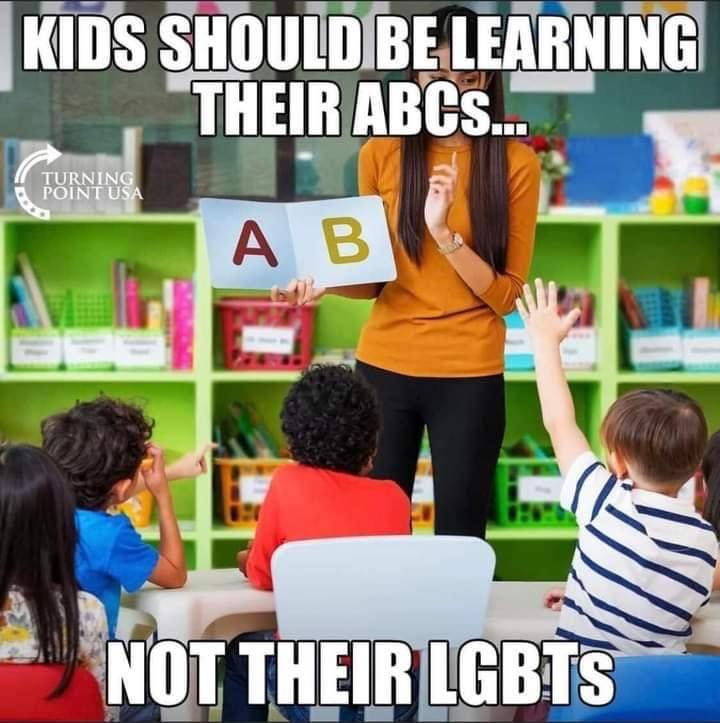In the mid-1960s, psychologist John Money encouraged the gender reassignment of David Reimer, who was born a biological male but suffered irreparable damage to his penis as an infant. Born in 1965 as Bruce Reimer, his penis was irreparably damaged during infancy due to a failed circumcision. After encouragement from Money, Reimer’s parents decided to raise Reimer as a girl. Reimer underwent surgery as an infant to construct rudimentary female genitals, and was given female hormones during puberty. During childhood, Reimer was never told he was biologically male and regularly visited Money, who tracked the progress of his gender reassignment. Reimer unknowingly acted as an experimental subject in Money’s controversial investigation, which he called the John/Joan case. The case provided results that were used to justify thousands of sex reassignment surgeries for cases of children with reproductive abnormalities. Despite his upbringing, Reimer rejected the female identity as a young teenager and began living as a male. He suffered severe depression throughout his life, which culminated in his suicide at thirty-eight years old. Reimer, and his public statements about the trauma of his transition, brought attention to gender identity and called into question the sex reassignment of infants and children.
Bruce Peter Reimer was born on 22 August 1965 in Winnipeg, Ontario, to Janet and Ron Reimer. At six months of age, both Reimer and his identical twin, Brian, were diagnosed with phimosis, a condition in which the foreskin of the penis cannot retract, inhibiting regular urination. On 27 April 1966, Reimer underwent circumcision, a common procedure in which a physician surgically removes the foreskin of the penis. Usually, physicians performing circumcisions use a scalpel or other sharp instrument to remove foreskin. However, Reimer’s physician used the unconventional technique of cauterization, or burning to cause tissue death. Reimer’s circumcision failed. Reimer’s brother did not undergo circumcision and his phimosis healed naturally. While the true extent of Reimer’s penile damage was unclear, the overwhelming majority of biographers and journalists maintained that it was either totally severed or otherwise damaged beyond the possibility of function. In 1967, Reimer’s parents sought the help of John Money, a psychologist and sexologist who worked at the Johns Hopkins Hospital in Baltimore, Maryland. In the mid twentieth century, Money helped establish the views on the psychology of gender identities and roles. In his academic work, Money argued in favor of the increasingly mainstream idea that gender was a societal construct, malleable from an early age. He stated that being raised as a female was in Reimer’s interest, and recommended sexual reassignment surgery. At the time, infants born with abnormal or intersex genitalia commonly received such interventions.
Following their consultation with Money, Reimer’s parents decided to raise Reimer as a girl. Physicians at the Johns Hopkins Hospital removed Reimer’s testes and damaged penis, and constructed a vestigial vulvae and a vaginal canal in their place. The physicians also opened a small hole in Reimer’s lower abdomen for urination. Following his gender reassignment surgery, Reimer was given the first name Brenda, and his parents raised him as a girl. He received estrogen during adolescence to promote the development of breasts. Throughout his childhood, Reimer was not informed about his male biology. Throughout his childhood, Reimer received annual checkups from Money. His twin brother was also part of Money’s research on sexual development and gender in children. As identical twins growing up in the same family, the Reimer brothers were what Money considered ideal case subjects for a psychology study on gender. Reimer was the first documented case of sex reassignment of a child born developmentally normal, while Reimer’s brother was a control subject who shared Reimer’s genetic makeup, intrauterine space, and household.
During the twin’s psychiatric visits with Money, and as part of his research, Reimer and his twin brother were directed to inspect one another’s genitals and engage in behavior resembling sexual intercourse. Reimer claimed that much of Money’s treatment involved the forced reenactment of sexual positions and motions with his brother. In some exercises, the brothers rehearsed missionary positions with thrusting motions, which Money justified as the rehearsal of healthy childhood sexual exploration. In his Rolling Stone interview, Reimer recalled that at least once, Money photographed those exercises. Money also made the brothers inspect one another’s pubic areas. Reimer stated that Money observed those exercises both alone and with as many as six colleagues. Reimer recounted anger and verbal abuse from Money if he or his brother resisted orders, in contrast to the calm and scientific demeanor Money presented to their parents. Reimer and his brother underwent Money’s treatments at preschool and grade school age. Money described Reimer’s transition as successful, and claimed that Reimer’s girlish behavior stood in stark contrast to his brother’s boyishness. Money reported on Reimer’s case as the John/Joan case, leaving out Reimer’s real name. For over a decade, Reimer and his brother unknowingly provided data that, according to biographers and the Intersex Society of North America, was used to reinforce Money’s theories on gender fluidity and provided justification for thousands of sex reassignment surgeries for children with abnormal genitals.
Contrary to Money’s notes, Reimer reports that as a child he experienced severe gender dysphoria, a condition in which someone experiences distress as a result of their assigned gender. Reimer reported that he did not identify as a girl and resented Money’s visits for treatment. At the age of thirteen, Reimer threatened to commit suicide if his parents took him to Money on the next annual visit. Bullied by peers in school for his masculine traits, Reimer claimed that despite receiving female hormones, wearing dresses, and having his interests directed toward typically female norms, he always felt that he was a boy. In 1980, at the age of fifteen, Reimer’s father told him the truth about his birth and the subsequent procedures. Following that revelation, Reimer assumed a male identity, taking the first name David. By age twenty-one, Reimer had received testosterone therapy and surgeries to remove his breasts and reconstruct a penis. He married Jane Fontaine, a single mother of three, on 22 September 1990.
In adulthood, Reimer reported that he suffered psychological trauma due to Money’s experiments, which Money had used to justify sexual reassignment surgery for children with intersex or damaged genitals since the 1970s. In the mid-1990s, Reimer met Milton Diamond, a psychologist at the University of Hawaii, in Honolulu, Hawaii, and academic rival of Money. Reimer participated in a follow-up study conducted by Diamond, in which Diamond cataloged the failures of Reimer’s transition.
In 1997, Reimer began speaking publicly about his experiences, beginning with his participation in Diamond’s study. Reimer’s first interview appeared in the December 1997 issue of Rolling Stone magazine. In interviews, and a later book about his experience, Reimer described his interactions with Money as torturous and abusive. Accordingly, Reimer claimed he developed a lifelong distrust of hospitals and medical professionals. With those reports, Reimer caused a multifaceted controversy over Money’s methods, honesty in data reporting, and the general ethics of sex reassignment surgeries on infants and children. Reimer’s description of his childhood conflicted with the scientific consensus about sex reassignment at the time. According to NOVA, Money led scientists to believe that the John/Joan case demonstrated an unreservedly successful sex transition. Reimer’s parents later blamed Money’s methods and alleged surreptitiousness for the psychological illnesses of their sons, although the notes of a former graduate student in Money’s lab indicated that Reimer’s parents dishonestly represented the transition’s success to Money and his coworkers. Reimer was further alleged by supporters of Money to have incorrectly recalled the details of his treatment. On Reimer’s case, Money publicly dismissed his criticism as antifeminist and anti-trans bias, but, according to his colleagues, was personally ashamed of the failure.
In his early twenties, Reimer attempted to commit suicide twice. According to Reimer, his adult family life was strained by marital problems and employment difficulty. Reimer’s brother, who suffered from depression and schizophrenia, died from an antidepressant drug overdose in July of 2002. On 2 May 2004, Reimer’s wife told him that she wanted a divorce. Two days later, at the age of thirty-eight, Reimer committed suicide by firearm. Reimer, Money, and the case became subjects of numerous books and documentaries following the exposé. Reimer also became somewhat iconic in popular culture, being directly referenced or alluded to in the television shows Chicago Hope, Law & Order, and Mental. The BBC series Horizon covered his story in two episodes, “The Boy Who Was Turned into a Girl” (2000) and “Dr. Money and the Boy with No Penis” (2004). Canadian rock group The Weakerthans wrote “Hymn of the Medical Oddity” about Reimer, and the New York-based Ensemble Studio Theatre production Boy was based on Reimer’s life.
Sources
Carey, Benedict. “John William Money, 84, Sexual Identity Researcher, Dies.” New York Times, 11 July 2016.
Colapinto, John. “The True Story of John/Joan.” Rolling Stone 11 (1997): 54–73.
Colapinto, John. As Nature Made Him: The Boy who was Raised as a Girl. New York: HarperCollins Publishers, 2000.
Colapinto, John. “Gender Gap—What were the Real Reasons behind David Reimer’s Suicide.” Slate (2004).
Dr. Money and the Boy with No Penis, documentary, written by Sanjida O’Connell (BBC, 2004), Film.
The Boy Who Was Turned Into a Girl, documentary, directed by Andrew Cohen (BBC, 2000.), Film.
“Who was David Reimer (also, sadly, known as John/Joan)?” Intersex Society of North America. http://www.isna.org/faq/reimer (Accessed October 31, 2017).
Gaetano, Phil, “David Reimer and John Money Gender Reassignment Controversy: The John/Joan Case”. Embryo Project Encyclopedia (2017-11-15). ISSN: 1940-5030 http://embryo.asu.edu/handle/10776/13009. Show full item record
Publisher- Arizona State University. School of Life Sciences. Center for Biology and Society. Embryo Project Encyclopedia.
Sexual and Gender Disorders; Money, John, 1921-2006; Reimer, David, 1965-2004; Reimer, Brenda, 1965-2004; Reimer, Bruce, 1965-2004; Sex change; Sex reassignment; Gender identity; Psychology; Gender; Concept
David Reimer and John Money Gender Reassignment Controversy: The John/Joan Case. By: Phil Gaetano Published: 2017-11-15
...


